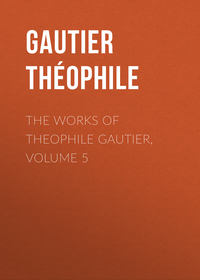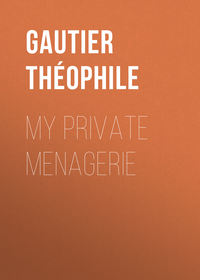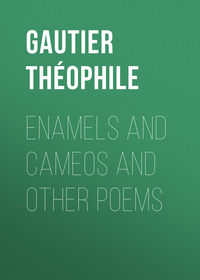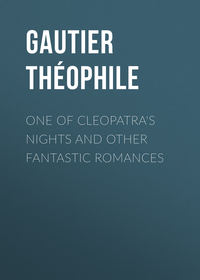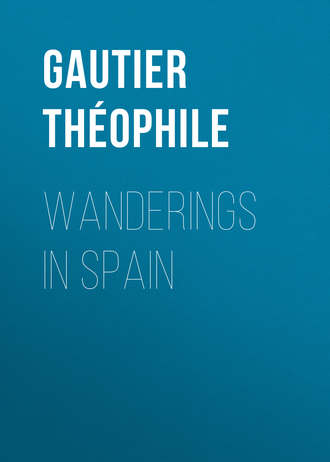 полная версия
полная версияWanderings in Spain
Thunders of applause burst forth from all parts of the amphitheatre; the palcos of the nobility, the gradas cubiertas of the middle classes, the tendidos of the manolos and manolas cried and shouted with all the ardour and petulance which distinguish the natives of southern climes, "Bueno! Bueno! Viva el Barbero! Viva!!!"
The blow which the espada had just given is held in high estimation, and called la estocada a vuela pies; the bull dies without losing one drop of blood, which is accounted the height of elegance, and by falling on his knees, seems to acknowledge his adversary's superiority. The aficionados (dilettanti) say that the inventor of this blow was Joaquin Rodriguez, a celebrated torrero of the last century.
When the bull does not die immediately, a mysterious little being, dressed in black, and who has hitherto taken no part in the proceedings, is seen to jump over the barrier. This is the cachetero. He advances with a stealthy step, looks at the bull in his death-struggle, to see whether he is capable of getting up again, which is sometimes the case, and, coming behind him, traitorously plunges a cylindrical dagger, shaped at its extremity like a lancet, into his neck; this cuts the spinal marrow, and produces instantaneous death. The best spot is behind the head, some inches from an imaginary straight line drawn from horn to horn.
The military band proclaimed the bull's death, one of the doors was thrown open, and four mules, magnificently caparisoned with feathers, bells, woollen tufts, and little flags, yellow and red, the Spanish national colours, entered the arena. These mules bear off the dead bodies, which are attached to a rope, furnished at the end with a large hook. The horses were taken away first, and then the bull. These four splendid and spirited animals, who dragged along the sand, with frantic velocity, all the dead bodies which, but a short time before, were themselves so active, had a strange, savage look, which made you forget, in some degree, the mournful duty they had to perform. When they had left, a groom came with a basketful of earth, which he spread over the pools of blood, which might otherwise cause the torreros to slip. The picadores resumed their places near the door, the orchestra sounded a flourish, and another bull rushed into the arena, for no time is allowed to elapse between the acts of this drama; nothing stops it, not even the death of a torrero. As we have already mentioned, the doubles are waiting, ready dressed and armed, in case of accidents. It is not our intention to give a separate account of the deaths of eight different bulls who were sacrificed that day; we will merely mention certain variations and remarkable incidents.
The bulls are not always very savage; some are even very gentle, and would only be too happy to lie down quietly in the shade. It is easy to perceive, by their good-natured honest look, that they prefer their pastures to the circus. They turn their backs on the picadores, and, in the most phlegmatic manner, allow the chulos to wave their many-coloured cloaks under their very nose. Not even the banderillas can rouse them from their apathetic condition. In cases like these, it is necessary to have recourse to more violent expedients; such, for example, as the banderillas de fuego. These are slight sticks, with fireworks attached, which go off some minutes after they are planted in the shoulders of the toro cobarde (coward) and explode with a shower of sparks and detonations. By this ingenious contrivance, the bull is goaded, burnt, and stunned simultaneously; were he the most aplomado (leaden) of bulls, he cannot possibly avoid becoming furious. He indulges in a succession of extravagant capers, of which no one would ever suppose so heavy an animal capable; he bellows, foams, and twists himself about in every direction, to escape from the disagreeable proximity of the fireworks, which are burning his ears and scorching his hide.
The banderillas de fuego, however, are never used but at the last extremity; the fight is considered, as it were, disgraced when it is necessary to have recourse to them; but if the alcade is too long before waving his handkerchief as a sign that he allows them to be employed, the public create such a horrible disturbance that he is obliged to yield. The most extraordinary vociferations, howling, shouting, and stamping of feet, break out on all sides. Some holla "Banderillas de fuego!" while others exclaim, "Perros! perros!" (The dogs!) The bull is overwhelmed with abuse; he is called a scoundrel, an assassin, a thief; the spectators offer him a place in the shade, and indulge in all sorts of pleasantry, which is frequently very witty. In a short time a chorus of sticks is added to the vociferations, if the latter do not produce the desired effect. The flooring of the palcos creaks and gapes, and the painting on the ceilings falls in small whitish pellicles, like so much snow mixed with dust. The public becomes exasperated to the highest pitch. "Fuego al alcade! perros el alcade!" (Burn the alcade! to the dogs with him!) shout the incensed multitude, shaking their fists at the box of the ayuntamiento. At last, the much desired permission is granted, and everything becomes quiet again. During these kinds of jawing-matches– excuse the term, but I cannot find a better – you often hear some very humorous remarks. I will instance one that is very concise and very cutting. A picador, magnificently dressed in a completely new suit, was showing off on his horse without taking any part in the proceedings, and remaining in a part of the circus where there was no danger. "Pintura! pintura!" hollaed the spectators to him, clearly perceiving the motives of his conduct.
Very frequently the bull is so cowardly that even the banderillas de fuego are insufficient. He returns to his querenzia, and will not enter. The cries of "Perros! perros!" then recommence. On a sign from the alcade, the canine gentlemen are introduced. They are admirable animals, of the purest breed and most extraordinary beauty. They go straight up to the bull. The latter tosses about half-a-dozen in the air, but that does not prevent one or two of the strongest and most courageous from at length succeeding in catching hold of his ear. When they have once fastened on it they are like leeches; they might be turned inside out before they would let go. The bull shakes his head – dashes them against the barrier – but it is of no avail. When this has lasted for some time, the espada, or the cachetero, plunges a sword into the side of the victim, who bends his knees and falls on the ground, where he is despatched. Sometimes they employ a kind of instrument called a media-luna, (half-moon), with which they hamstring him, and render him incapable of offering any resistance: in this case it is no longer a combat, but a disgusting butchery. It frequently happens that a matador fails; his sword meets with a bone and springs back, or else it enters the throat and causes the bull to vomit blood in large quantities; this is a serious fault according to the laws of Tauromaquia. If the animal is not despatched at the second blow, the espada is overwhelmed with hisses and abuse; for the Spanish public is impartial: it applauds both bull and man in exact proportion to their respective merits. If the bull rips up a horse and over-throws the rider, it shouts "Bravo, toro!" if the man wounds the bull, "Bravo, torrero!" but it will not suffer cowardice either in man or beast. A poor devil who was afraid to go and fix his banderillas in an extremely ferocious bull, occasioned such a tumult, that the alcade, in order to restore order, promised to have him sent to prison.
During this very fight, Sevilla, who is an admirable horseman, was greatly applauded for the following feat: – An extraordinarily strong bull caught his horse under the belly, and, tossing up its head, lifted it completely off the ground. In this perilous situation, Sevilla did not so much as move in his saddle, but kept both stirrups, and held his horse so well in hand that it came down again upon its four feet.
The day's entertainment had been good. Eight bulls and fourteen horses killed, and a chulo slightly wounded: what could any one desire more? Each bull-fight must bring in about twenty or twenty-five thousand francs,5 which are given by the queen to the principal hospital, where the wounded torreros are treated with every possible attention. A priest and a surgeon are always waiting in a room at the Plaza de Toros, ready to administer spiritual or corporal assistance as the case may be. Formerly, and I believe it is the case at present as well, a mass used to be said for the combatants during the fight. You see that nothing is neglected, and that the impressarios take every precaution. As soon as the last bull is killed, every one leaps into the arena, and discusses on the way home the merit of the different suertes or cogidas which have struck him as most worthy of notice. And what, you will ask, are the women like? for that is the first question put to a traveller. I own, frankly, that I have not the slightest idea. I have a vague notion that there were some very pretty ones near me, but I will not positively assert the fact.
Let us proceed to the Prado, in order to clear up this important point.
CHAPTER VII
MADRID —continued
The Prado – The Mantilla and Fan – The Spanish Type – Water-Merchants; Coffee-houses of Madrid – Newspapers – The Politicians of the Puerta del Sol – Post-Office – The Houses of Madrid – Tertullias; Spanish Society – The Teatro del Principe – The Queen's Palace; the Palace of the Cortes, and the Monument of the Dos de Mayo – The Armeria and El Buen Retiro.
Whenever Madrid is mentioned, the first objects that the word suggests to our minds are the Prado and La Puerta del Sol. Since then our inclination leads us to do so, let us now proceed to the Prado, as it is the hour of the evening promenade. The Prado consists of a number of alleys and cross-alleys, with a road in the middle for carriages. It is shaded by stunted pollards, whose roots are in connexion with a little basin lined with brick, into which the water is conveyed by small canals at the hours appointed for watering; without this precaution the trees would soon be devoured by the dust, and shrivelled up by the sun. The promenade commences at the Convent d'Atocha, passing by the gate of that name, as well as by the Puerta d'Alcala, and terminating at the gate of the Franciscan Friars. The fashionable world, however, frequents only the space bounded by the fountain of Cybele and the fountain of Neptune, from the Puerta d'Alcala to the Carrera de San Jeronimo. Within this space there is a large plot of ground called the saloon, surrounded by chairs, like the principal walk in the gardens of the Tuileries. Near the saloon there is a cross-walk which bears the name of Paris. It is the Boulevard de Gand of Madrid, and the rendezvous of the fashionable world. The fashionable world, however, is not, as a general rule, particularly distinguished by a taste for the picturesque, and in this instance it has selected the most dusty, the least shady, and the least convenient part of the whole promenade. The crowd is so great in this narrow space, confined between the saloon and the carriage-way, that you frequently find it a difficult task to put your hand into your pocket and take out your handkerchief. You must "lock up" and follow the stream as you would in the tail at the doors of a theatre (that is to say, as you would have done when there were tails at the doors of a theatre). The only possible reason there could have been for choosing this spot, is that you can see and salute the persons who are passing in their carriages (it always looks well for a foot-passenger to salute a carriage). The equipages are not very brilliant. Most of them are drawn by mules, whose long, blackish coat, large belly, and pointed ears, produce a most ungraceful effect; they resemble the mourning coaches which follow a hearse. The carriage of the queen herself has but a very simple and tradesman-like appearance. Any Englishman, with the slightest pretensions to being considered a millionaire, would most certainly look down upon it with contempt; there are, doubtless, some exceptions, but they are rare. The splendid Andalusian horses, however, on which the young fashionables of Madrid prance about, are charming. It is impossible to behold anything more elegant, more noble, and more graceful than an Andalusian stallion, with its plaited mane, long, thick tail reaching to the ground, trappings ornamented with red tufts, stately head, sparkling eye, and neck swelling out like a pigeon's breast. I saw one ridden by a lady, of the colour of a Bengal rose (the horse and not the lady), frosted over with silver, and of the most marvellous beauty. What a difference there is between these noble beasts who have preserved all their splendid primitive form, and those locomotive machines made of muscles and bones, called English racers, which have nothing of the horse left about them, save four legs and a backbone on which to place a jockey!
The Prado most certainly offers one of the most animated sights it is possible to behold. The promenade is one of the finest in the world; not for the place itself, which is of the most ordinary description, in spite of all the efforts made by Charles III. to supply its natural defects, but on account of the astonishing concourse of persons that are collected there every evening, from seven o'clock until half-past ten. There are very few bonnets to be seen on the Prado. With the exception of some few bright yellow affairs resembling coal-scuttles, which may have been used to decorate the head of some learned ass, you meet with mantillas only. The Spanish mantilla is therefore a fact. I had previously believed that it existed no longer, save in the ballads of Monsieur Crevel de Charlemagne. It is made of black or white lace, but generally black, and is worn at the back of the head, on the top of the comb; a few flowers placed on each side of the forehead complete the head-dress, which produces the most charming effect imaginable. When a woman wears a mantilla, she must be as ugly as the three theological virtues not to appear pretty; unfortunately, it is the only part of the Spanish costume which has been preserved, all the rest is à la Française. The lower folds of the mantilla float above a shawl, an odious shawl, and the shawl is accompanied by a gown of some stuff or other, which does not bear the remotest resemblance to the basquina formerly worn. I cannot avoid being astonished at such blindness, and I cannot understand how it is that the women, who are generally so clearsighted in all that relates to their beauty, do not perceive that their immense efforts to be elegant only cause them, at most, to look like provincial fashionables, which, after all, is but a poor result. The old costume is so admirably adapted to the peculiar beauty, proportions, and manners of the Spanish women, that it is really the only one that can by any means become them. The fan corrects, to a certain extent, the bad taste of this pretension to Parisianism. A woman without a fan is something that I have not yet seen in this happy land; I have seen some who had satin shoes without stockings, but they always had a fan. The fan accompanies them everywhere, even to church, where you come across groups of them of all ages, kneeling down or squatting on their heels, and praying and fanning themselves most fervently. The proceedings are frequently varied by their making the sign of the cross in the Spanish manner, which is much more complicated than ours; they execute this manœuvre with a degree of rapidity and precision worthy of Prussian soldiers. The management of the fan is an art that is totally unknown in France. The Spanish women excel in it; the fan opens, shuts, and is twirled about in their fingers so rapidly and so lightly, that a conjurer could not do it better. Some ladies who are great amateurs have a most valuable collection of fans. We ourselves saw a collection of this kind which numbered more than a hundred, of various patterns. There were fans of every country and every period; fans made of ivory, tortoiseshell, sandal-wood, adorned with spangles, or painted in water-colours, in the style of Louis XIV. and Louis XV.; fans made of China or Japan rice-paper; in a word, fans of every possible description. Some of them were decorated with rubies, diamonds, and other precious stones. This custom of forming large collections of fans is a piece of tasteful extravagance, a charming mania in a pretty woman. The shutting and opening of the fans produce a little hissing sound, which, being repeated more than a thousand times a minute, pierces the confused hum which floats above the crowd, and has something very strange about it for a French ear. When a woman meets one of her acquaintance, she makes a little sign with her fan, and pronounces the word agur as she passes him. At present let us say something about Spanish beauty.
What we Frenchmen believe to constitute the Spanish type does not exist in Spain; at least, I have not met with it as yet. We generally picture to ourselves, whenever a señora or a mantilla is mentioned, a long, pale, oval face, large black eyes with velvet eyebrows, a sharp nose, slightly arched, a pair of bright red lips, and, to complete the whole, a warm, gold-like tint, bearing out the line in the song, Elle est jaune comme une orange (She is as yellow as an orange). This is the Arabic or Moorish, and not the Spanish type. The women of Madrid are charming creatures, in the fullest acceptation of the word; out of every four, there are three who are pretty; but they do not correspond in the least with the notion we have formed of them. They are short, delicate, and well-shaped; their foot is small, their figure graceful, and their bust full and voluptuous; but their skin is very white, their features fine and irregular, and their mouth formed like a heart, resembling exactly some of our beauties in the time of the Regent.6 Many have light chestnut hair, and you cannot take two turns upon the Prado without meeting seven or eight women with fair hair of every possible shade, from the light blond to the most vivid red, like the beard of Charles V. It is an error to suppose that there are no fair-complexioned women in Spain. Blue eyes are very common, but they are not so highly esteemed as black ones.
During the first few days, we had some difficulty in accustoming ourselves to the sight of women with their shoulders exposed as if they were going to a ball, their arms bare, their feet encased in satin shoes, and their fan in their hand, walking about alone in a public thoroughfare, for it is not the custom to offer your arm to a lady unless you are her husband or some near relation; you content yourself with merely walking by her side, at least as long as it is light, for after nightfall, this practice is not so rigorously observed, especially with foreigners who are not used to it.
We had heard people talk a great deal of the manolas of Madrid; the type of the manola has disappeared, like that of the grisette in Paris, and of the transteverini in Rome; it certainly does exist, but it has been stripped of all its primitive characteristics. The manola no longer wears her old costume, which was so spirited and picturesque. The ignoble gown of printed calico has replaced the bright-coloured basquina, embroidered with extravagant patterns; the frightful leather shoe has superseded the satin slipper, and, horrible idea, their gowns are lengthened at least two good inches. In former days, the manolas lent an aspect of variety to the Prado by their lively manner and their singular dress; at present, it is difficult to distinguish them from the wives of the lower class of tradespeople. I looked for the full-blood manola in every corner of Madrid; at the bull-fights, in the Garden de las Delicias, at the Nuevo Recreo, and on the Festival of Saint Anthony, without finding a perfect one. Once, as I was crossing the quarter of the Rastro, the Temple7 of Madrid, after I had picked my way between an immense number of dirty wretches, who were stretched out asleep, upon the ground, in the midst of the most horrible collection of rags, I found myself in a little deserted lane. There, for the first time, did I behold the manola I was in search of. She was a tall, strapping girl, about four-and-twenty, which is the greatest age that a manola or a grisette can ever attain. She had a dark complexion, a sorrowful but determined look, rather thick lips, and something strangely African in the general formation of her face. An immense roll of hair that was so intensely black as to appear blue, and plaited like so much basket-work, encircled her head and terminated in a large high-backed comb. A bunch of coral hung from each ear, her tawny neck was adorned with a necklace of the same material; a mantilla of black velvet was wound around her head and shoulders, her robe, which was as short as those of the Swiss girls in the Canton of Berne, was formed of embroidered cloth, and exposed to view her well-shaped nervous legs encased in a pair of tightly-fitting black silk stockings; her shoes were of satin according to the old fashion; and to complete the whole, a red fan fluttered about like a cinnabar butterfly between her fingers, which were loaded with silver rings. The last of the manolas turned round the corner of the lane and disappeared from my sight, leaving me in a state of astonishment at having once, at least, seen walking about in the every-day world a costume so admirably adapted for the masquerades at the Opera! On the Prado, too, I saw some pasiegas from Santander, in their national costume. These pasiegas are accounted the best wet-nurses in Spain, and their affection for their little charges is as proverbial as is the honesty of the natives of Auvergne in France. They wear a red cloth petticoat with large pleats, and a broad silver-lace border, a velvet bodice trimmed with gold, and a variegated bright-coloured silk handkerchief as a headdress, the whole being accompanied with silver trinkets and other barbarous ornaments. These women are extremely handsome, and have a very striking expression of strength and grandeur. Their custom of carrying the child upon their arms causes them to throw their body rather back; this shows off the development of their busts to great advantage. It is looked upon as a kind of luxury to keep a pasiega in full costume, just as it is to have a Klepht standing behind your carriage.
I have said nothing about the dress of the men. Look at the plates of the fashions, six months old, in the shop of some tailor, or in some reading-room, and you will have a correct idea of it. Paris is the object which absorbs the thoughts of every one, and I recollect having once seen written over the shed of a shoe-black, "Boots cleaned here after the Parisian fashion (al estilo de Paris)." The modest aim of the modern hidalgos is to embody the delicious designs of Gavarni; they are not aware that there are but a few of the most elegant Parisians who can succeed in the attempt. We must, however, do them the justice to say, that they are much better dressed than the women; their patent-leather boots are as brilliant, and their gloves as white as it is possible for boots or gloves to be. Their coats are correct, and their trousers very praiseworthy; but the cravat cannot boast of the same purity of taste, and the waistcoat, the only portion of modern costume which offers any scope for the exercise of the fancy, is not always irreproachable.
There is a trade at Madrid of which no one in Paris has an idea. I allude to the retailing of water. The stock in trade of the water-seller consists of a cantaro of white clay, a small reed or tin basket, containing two or three glasses, a few azucarillos (sticks of porous caramel sugar), and sometimes a couple of oranges or limes. There is one class of water-sellers, who have little casks twined round with green branches, which they carry on their back. Some of them even go so far – along the Prado, for instance – as to exhibit painted counters, surmounted by little brass figures of Fame, and small flags, not a whit inferior in magnificence to the displays made by the marchands de coco in Paris. These same water-sellers are generally young muchachos from Gallicia, and are clad in a snuff-coloured cloth jacket, breeches, black gaiters, and a peaked hat. There are also some who are natives of Valencia, with their white linen drawers, their piece of stuff thrown over their shoulder, their legs bronzed by the sun, and their alpargatas bordered with blue. There are also a few women and little girls, whose costumes present nothing worthy of notice, that sell water. They are called, according to their sex, aguadores or aguadoras. In all quarters of the city do you hear their shrill cries, pitched in all sorts of keys, and varied in a hundred thousand manners: Agua, agua, quien quiere agua? Agua helada, fresquita como la nieve! This lasts from five in the morning till ten in the evening, and has inspired Breton de los Herreros, a favourite author of Madrid, with the idea of a song, entitled l'Aguadora, which has been very popular all through Spain. This thirst of the population of Madrid is certainly a most extraordinary thing; all the water in the fountains, and all the snow of the mountains of Guadarrama, are insufficient to allay it. People have joked a great deal about the poor Manzanares, and its Naïad with her dry urn, but I should just like to see what sort of a figure any other river would cut in a town parched up by the same thirst. The Manzanares is drunk up at its very source; the aguadores anxiously lie in wait for the least drop of water, the slightest appearance of humidity which oozes forth between its dry banks, and carry it off in their cantaros and casks; the laundresses wash the linen with sand, and, in the very middle of the bed of the river, a Mahommedan would not find sufficient water to enable him to perform his ablutions. The reader may, perhaps, recollect a delicious feuilleton, in which Méry describes the thirst of Marseilles. Exaggerate this six times, and you will have but a slight idea of the thirst of Madrid. The price of a glass of water is a cuarto (about a farthing). What Madrid most stands in need of, after water, is fire, wherewith to light its cigars; consequently, the cry, Fuego, fuego, is heard in every direction, mingled incessantly with that of agua, agua. There is a desperate struggle between the two elements, each of which appears to be striving which can make the most noise. The fire, which is more inextinguishable than that of Vesta, is carried about by young rascals in little vases filled with coal and fine ashes, with a handle, to prevent the bearers from burning their fingers.


